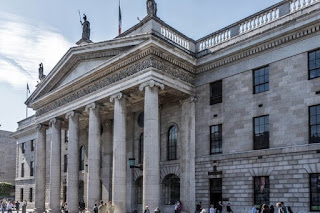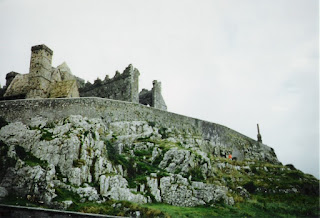July 13, 1997
July 13, 1997
My relatives talked Aimee and I into joining them this summer for their annual beach holiday on the Florida Panhandle. I have jokingly referred to it as the “Redneck Riviera”. We are flying Northwest Airlines through Memphis to Fort Walton Beach, FL. In Memphis, we are told the next leg is oversold and they want volunteers to be bumped. Aimee and I jumped at the opportunity. Every other time, I have been on a business trip and I couldn't accept. We are offered a voucher for a free flight and a seat on the next flight to Fort Walton this evening. We also get lunch vouchers.
Since we have several hours to kill, my plan is to rent a car and see the city. Memphis is virgin territory for me. We ask the third bumpee, a middle-aged woman, if she wants to come along. She does. I look on the Memphis map and decide to hit Mud Island along the riverfront. I have no idea what it is. After parking downtown, we board an overhead monorail that carries us over the Mississippi River to Mud Island. I immediately recognize this tram from the chase scene at the end of the Tom Cruise movie ‘The Firm’ that came out a few years ago.
Mud Island turns out to be a Mississippi River museum. The first half is indoors and has exhibits on the importance of the river to local history and commerce. Steamboats and cotton are the main features. Outside is a large tent that holds “Memphis Belle", a famous B-17 bomber from WWII.
The second part of the museum is outdoors and is extraordinary. It consists of a huge scale model of the lower Mississippi River from Cairo, IL down to the Gulf of Mexico. This concrete structure replicates the river’s topographic contours including every twist and oxbow and floodplain. It even has running water. As we walk the 2000-foot length of the model where each stride equals a mile, we learn about the cities along the river and important facts about this vital American waterway. The most intriguing part is the mouth of the river. The model river flows out a concrete ‘delta’ into a ‘Gulf of Mexico’ swimming pool! What a cool idea!
Back at the Memphis airport we catch our afternoon flight to Fort Walton Beach and pick up our rental car. On the way through town we pass Indian Temple Mound Museum. I stop and take a quick look at this ceremonial mound near the beach. This mound is part of the same Mississippian culture of Cahokia Mounds near my hometown. Aimee stayed in the car. She is anxious to get to the beach.
Our family has rented a house on Gulf Trace beach east of Destin. We cross to the adjoining barrier island (part of Gulf Islands National Seashore) and then by bridge to Destin. By the time we reach the house, it is dark and hard to find. A small penance for our little adventure! The next morning we see where we are. This large house overlooks the beach and what a nice beach it is. It is wide and beautiful with ultra-white sand. We enjoy the rest of the week relaxing and playing a little golf.



































